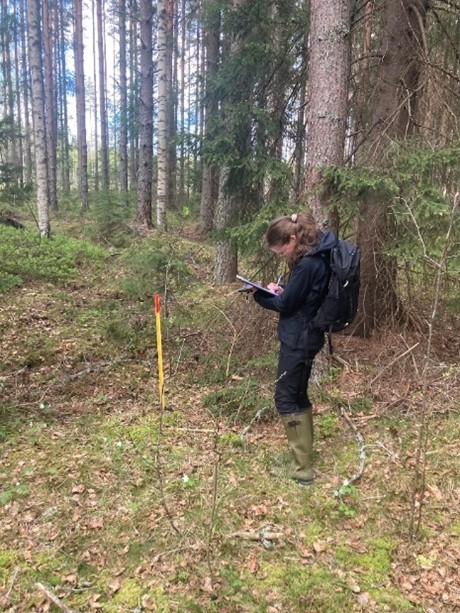Since the early 1970s, SITES Grimsö Wildlife Research Station has been a hub for long-term wildlife and habitat monitoring. Some of the station's ongoing surveys were launched as early as 1973–74, when the station first opened. Spanning a research area of 13,000 hectares, these long-running data series are not only rare in Sweden, but also internationally.
Several of these datasets are available through the SITES Data Portal. These include, for example, reproduction indices for red foxes and starlings, and population cycles of microtines (i.e. small rodents such as voles). Other datasets can be accessed by contacting the station directly.
The surveys vary in frequency: some are conducted annually, others twice per year (in spring and fall), while a few run continuously. Many were initiated as part of national monitoring programs in the 1970s and 80s; others began as academic research projects and have since evolved into long-term monitoring efforts. Newer surveys have also been developed in cooperation with SITES. Besides monitoring and research, the long-term data are a crucial reference for evaluating new ecological methods and technologies.

Pellet count and habitat sampling at one of 600 plots checked twice a year (Photo: Gunnar Jansson)
From April to June, four of the station’s largest surveys are conducted. Among them is the annual pellet count, which estimates population trends for six herbivore species—moose, roe deer, hares, capercaillie, black grouse, and hazel grouse—while also collecting habitat data. Pellet count methods are well-established in wildlife ecology and inform not only research but also wildlife management decisions. The methodology developed at Grimsö has become the standard for nationwide monitoring of moose populations in Sweden.
Although Grimsö has a long tradition of research on large carnivores such as wolves and lynx, data from these studies are not included in the SITES monitoring program. Instead, they are collected in collaboration with government agencies like the Swedish Environmental Protection Agency and regional County Administrative Boards and are available through those institutions.

Wildlife monitoring series at SITES Grimsö and their respective start year (i.e. period with available data). For further information, see SITES Data Portal or contact Grimsö Wildlife Research Station.